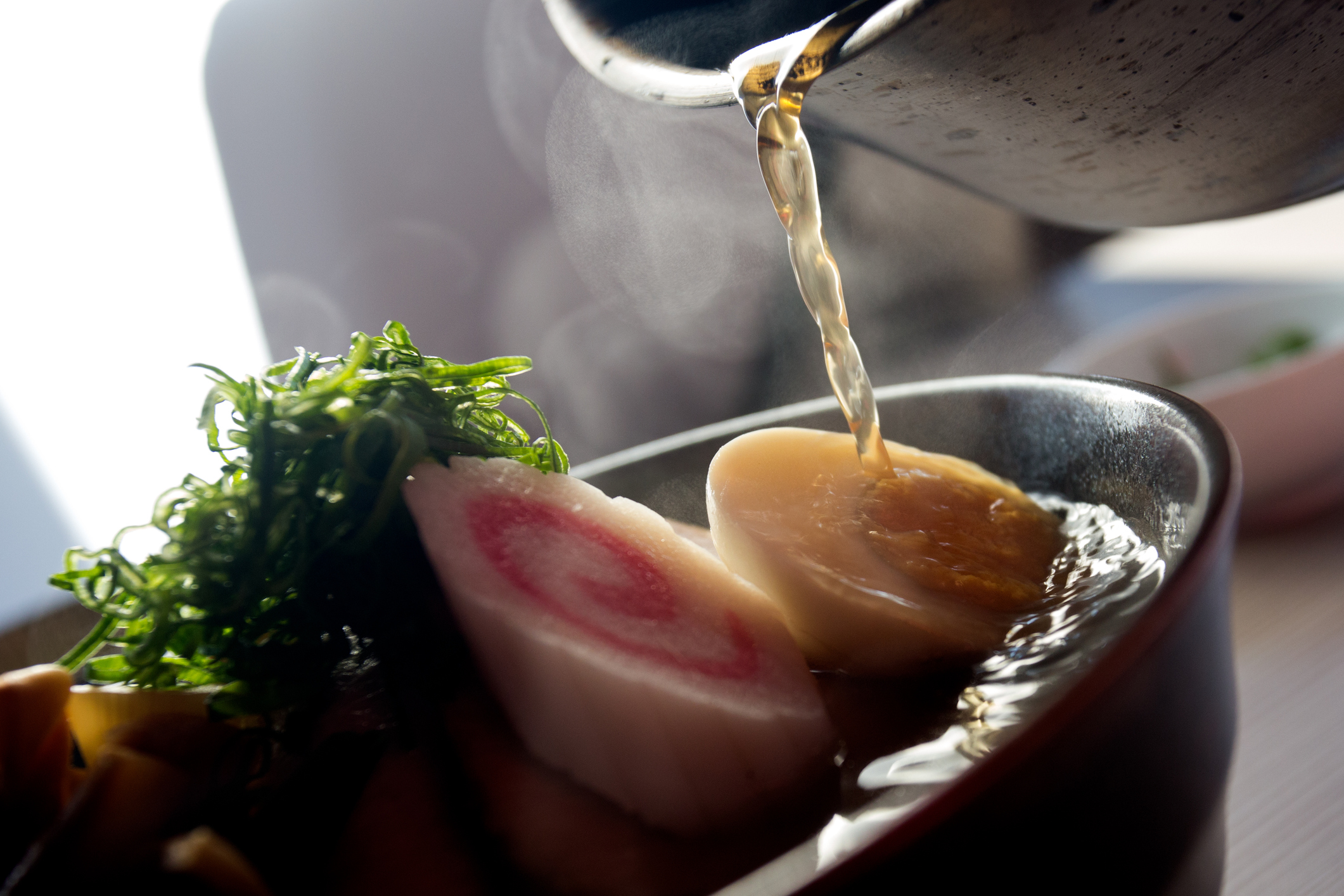There are several ingredients in a bowl of ramen like the ones you’ll find at ramen shops; stock, tare, noodles, and toppings / garnishes including slices of pork, beef, anchovies, tuna flakes, sliced scallions, leafy vegetables and an egg. Traditionally ramen broth is a combination of stock and tare. Stock is the foundation of ramen broth and comes from a combination of sources. Typically one or more varieties made from chicken, beef or pork bones long simmered in water combined with dashi. Today there are a range of ready-made ramen beef bone broths available on the market.
Ramen originated in China – it’s a soup style noodle dish that has become a staple of Japanese food, and is now enjoyed in many versions all around the world.
During the Meiji era (1868 – 1912) Japan began to accept merchants and visitors from overseas, having been previously closed to international trade. Among these, Chinese traders came and set up ‘Chinatowns’ at port cities like Yokohama, with restaurants serving Chinese cuisine. La mian or ‘stretched out noodles’ became popular with Japanese customers. The ramen noodle spread throughout Japan to become a staple food. In 1884 the first Japanese restaurant to serve a bowl of noodles like today’s Ramen was Yowaken. The first Japanese Ramen shop emerged in 1910 in Tokyo.
Ramen are egg noodles which cook quickly, compared with the thick buckwheat noodles called udon. Ramen is generally classified by broth flavour, with three common versions: shoyu (soy sauce), shio (salt), and miso. A fourth, tonkotsu, has a pork broth base – it was made by mistake in 1947 Fukuoka, and is now world-famous. Chefs over boiling the soup made the pork broth very milky white but on tasting it decided it worked. Regional varieties of ramen started to appear with ramen noodles increasingly consumed at street stalls all over Japan. The various regional ramen have stories behind their origination and the history of their toppings and garnishes.
There was a severe food shortage after World War II – An entrepreneur named Momofuku Ando seized an opportunity inspired by seeing queues of people waiting for a ramen bowl – He decided there was a market for a home-style ramen. In 1958 he founded Nissin foods to bring his dried noodle and seasoning mix instant ramen to the Japanese. It was quickly adopted by Japanese home cooks. He later developed a ramen in a paper cup finished with boiling water. Japan’s industrialisation and urbanisation supported the interest. Because of their ease and price point, Ramen and cup noodles became popular with workers and students. Mechanical noodle making machines were also in use, extending and supporting the market.
Ramen has since become a popular dish internationally. It appeals to everyone from households to gourmands with Ramen bars and restaurants found all over the world. In Japan alone there are over 30,000 ramen shops, with 10,000 in Tokyo. The UK ramen boom was born in 2012 when ramen bar ‘Shoryu Ramen’ brought genuine Hakata Tonkotsu ramen to lovers of ramen across London and launched it as a popular dish.
As ramen has developed over the last 50 years, modern-day ramen chefs have used creative license to extend beyond these categories. Local variations have emerged to suit local flavours and ingredients – pre-made ramen broth soups can be found in supermarket aisles covering traditional chicken and pork through to beef and seafood variations. Nissen continues to maintain strong market share, having opened a plant in California in the 1970’s to serve the American market,.
As an industrial food manufacturer, Taranaki Bio Extracts’ New Zealand grass-fed beef bone broth/ extract range provides ideal ingredient options for a manufactured Ramen broth – an incredibly comforting and nourishing dish. Our products holds a lot of flavour that can be built on, and a strong value proposition to support a modern brand.
To learn more about our broth and extracts: Our range of natural food ingredients | Taranaki Bio Extracts
Ends.
